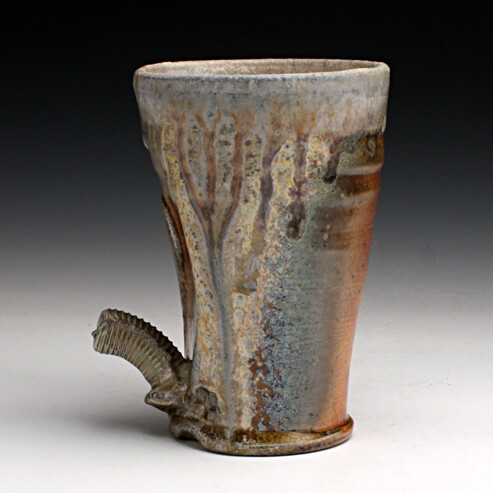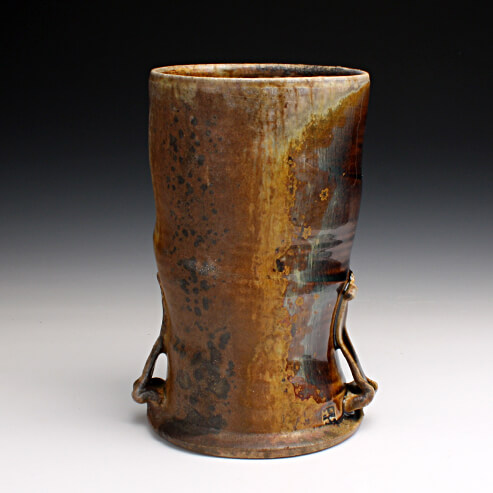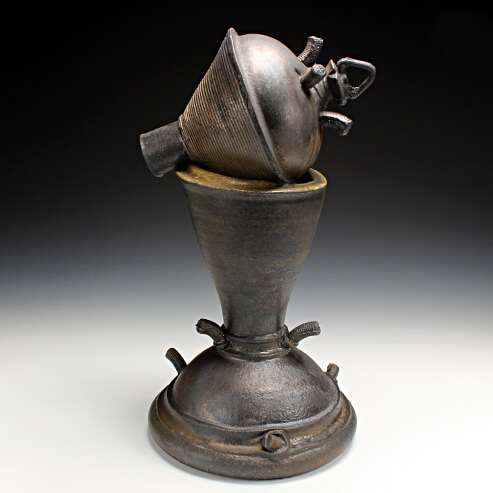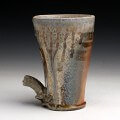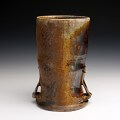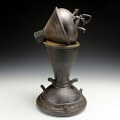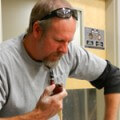
Red Lodge Clay Center – Short-Term Resident (AIA) 2009
Since receiving his M.F.A. from Indiana University, Bloomington in 1996, Von has become a nationally and internationally exhibited artist in ceramics. He has also established a commendable reputation in architectural ceramics, production design, RAM Press methods, slip casting, mold making and wheel throwing, along with kiln design and construction. Venhuizen’s work has been included in over 100 juried, invitational and solo exhibitions since 1993. His pieces have been published in 12 books and periodicals and have been collected by private collectors, university collections, and museums.
An observer, this is how I see myself. I have always had a fascination for trying
to understand how and why things are made the way they are, and what is their purpose
or function.
I have an immense interest in industry. My work references some of the
industrial items that I find inspiring. My pieces do not have a specific function or
purpose, but they ask the viewer to question what the pieces may be. Pieces have been
woodfired and left very dark in color and appearance, alluding to the build-up of a dirty
industrial environment. Other pieces made of porcelain get coated in roofing tar and tung
oil. By taking the “preciousness” of the material and coating it in tar, I give the piece it’s
own history.
Up until 3 1/2 years ago, wheel thrown stoneware and slip-cast porcelain composed
most of my work, both in individual pieces and installations. I have determined I am
interested in the “cog” that makes the machine work. It goes to something I teach all my
students – “Life is in the details.” Within my research I tend to occupy my time with the
box or packaging that something comes in – things that many people discard and give no
attention, rather than the “prize in the box.” I then make molds and take the assorted
pieces and assemble ceramic vessels and objects that have an industrial reference. Many
surfaces are applied after the firing. Things such as roofing tar, liquid spray caulk, and
tung oil create surfaces that visually relate to the passage of time and its effects on
objects. Some of these surfaces will relate closer to the beginning of the object’s life.
Others will relate to the objects nearing the end of their expected usefulness.
Due to a nerve injury during a blood test in 2006, I was unable to throw on the
wheel for almost 4 years. Since having surgery in 2009, I am now back to throwing but
have found many new ways to create the work I must make. Having everything you
know taken from you on how to create Art is terrifying, but it lead to an opportunity to
learn to create in new ways and this inevitably found itÕs way into the classroom.
Students were able to see that even with a limited capacity, I was still able to do whatever
I put my mind to! My new work consists of taking the industrial items I find so
appealing, and meshing it with a childish flavor. Colors, texture, and patterns will begin
to reference a child’s toy or “signage” for the universal person. The pieces are to be toy-
like in nature but the subject matter is to have a more industrial form.
My work asks the questions, “what could it be used for, or simply, what could it
be?” Various industrial items suggest new forms and ideas, which I use to create my own
pieces. Clay then allows me to create my objects in any form. With the richness and
plasticity of clay, I can manipulate the object itself, or the surface in a way that is similar
to many items I have observed or feel need to be observed. With the meshing of these
ideas, and the “cog,” I can continue to create an ongoing interface between mystery and
familiarity.

